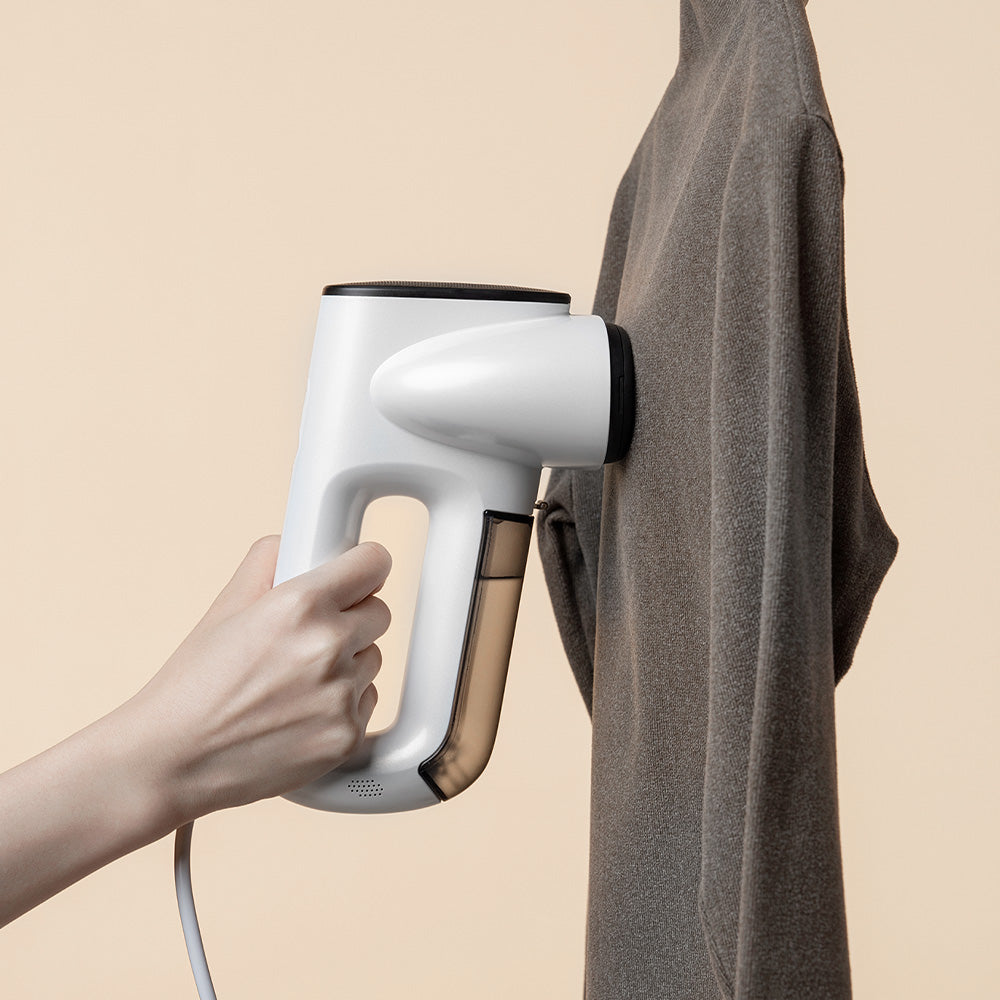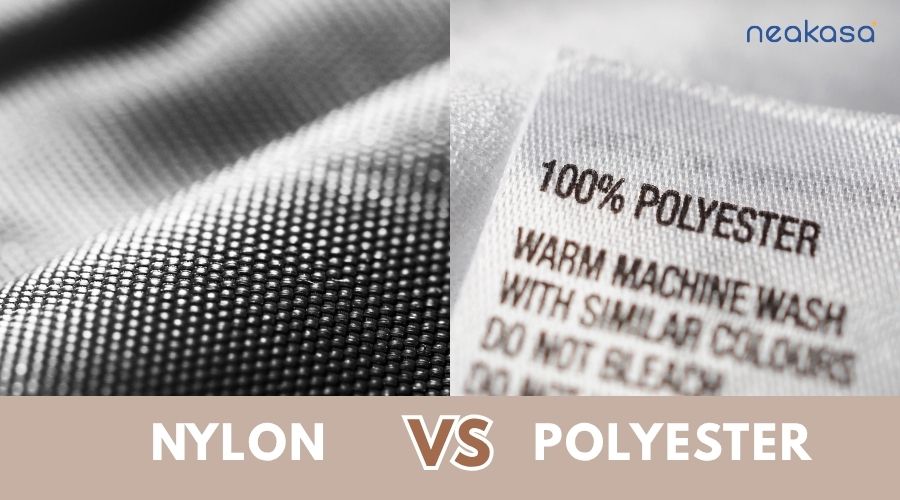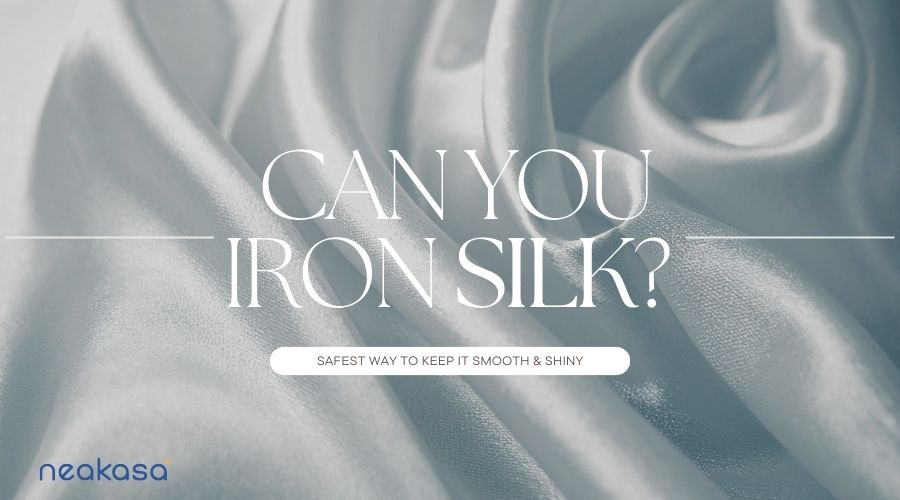Nylon and polyester are two of the most widely used synthetic fibers in clothing and textiles. Both offer durability, water resistance, and easy maintenance, but they differ in performance, feel, and applications.
This guide compares nylon vs polyester in detail so you can choose the best fabric for your clothes.
Nylon vs. Polyester: A Quick Look
Before diving deeper, here's a brief overview of their origins and key properties.
- Nylon: Introduced in the 1930s, valued for strength, elasticity, and smooth texture.
- Polyester: Developed in the 1940s, prized for wrinkle resistance, quick-drying ability, and affordability.
What Is Nylon?
A synthetic polymer known for its high elasticity, abrasion resistance, and shape retention. It is used in sportswear, outdoor gear, hosiery, and industrial products.

What Is Polyester?
A synthetic fiber known for its wrinkle resistance, quick drying, and color retention. It is commonly used in everyday clothing, home textiles, and performance apparel.

Pros and Cons of Nylon and Polyester Fabrics
| Fabric | Pros | Cons |
|---|---|---|
| Nylon | Softer and smoother feel High elasticity Slightly more water-resistant |
Usually more expensive Prone to static build-up |
| Polyester | More affordable Retains color well Resists wrinkles |
Less breathable Can feel stiffer |
Comparison: Key Differences Between Nylon and Polyester
Now that we know the basics, let's compare these two fabrics side by side in different performance areas.
Durability
Meaning: A material’s ability to resist wear, stretching, and breaking over time.
- Nylon: Unmatched abrasion resistance and high tensile strength, resists wear and tear even with repeated friction. Best for extreme wear applications like backpack straps or climbing ropes.
- Polyester: Very durable but generally slightly less abrasion-resistant than nylon.
Water Resistance
Meaning: A material’s ability to prevent water absorption and penetration when exposed to moisture.
- Nylon: Water-resistant but slightly more absorbent than polyester, can feel heavier when wet.
- Polyester: Absorbs very little water, stays dry in damp conditions. Often preferred for waterproof jackets and outdoor gear.
Breathability & Moisture-Wicking
Meaning: A fabric’s ability to allow air circulation and move moisture away from the skin.
- Nylon: Generally more breathable than polyester, especially with certain weaves.
- Polyester: Poor natural breathability due to hydrophobic nature, but can be improved with treatments (e.g., Coolmax®) for activewear.
Warmth
Meaning: A fabric’s ability to retain body heat and provide insulation in cold environments.
- Nylon: Not inherently warm; insulation depends on fabric thickness/weave.
- Polyester: Not inherently warm, but excellent for synthetic insulation (e.g., Primaloft®), retains warmth even when wet.
Feel & Comfort
Meaning: How soft, smooth, and pleasant a fabric feels against the skin.
- Nylon: Softer, smoother, silky texture; popular for close-to-skin garments.
- Polyester: Can feel stiff, but modern finishing can make it soft and comfortable.
Cost
Meaning: The production expense and market price level of a material.
- Nylon: More expensive to produce, used where performance justifies the price.
- Polyester: Cheaper to produce, dominates affordable clothing markets.
Quick Check
| Feature | Nylon | Polyester |
|---|---|---|
| Durability | High elasticity, abrasion-resistant | Durable, less elastic |
| Water Resistance | Good, but absorbs small amounts of water | Excellent water resistance |
| Breathability | Moderate | Low to moderate, better moisture-wicking |
| Feel & Comfort | Soft, smooth | Slightly coarser |
| Warmth | Lightweight warmth | Better heat retention |
| Cost | Higher price | More affordable |
Nylon or Polyester? Choose By Usage Scenario!
Choosing between nylon and polyester often depends on where and how you'll wear the fabric.
- Sportswear : Choose Polyester. Moisture-wicking, shape retention, and wrinkle resistance make it ideal for athletic wear.
- Outdoor Gear : Choose Nylon. Superior abrasion resistance for backpacks, tents, and climbing ropes.
- Everyday Clothing: Choose Polyester. Low maintenance, wrinkle-free, and cost-effective for daily wear.
- Accessories: Choose Nylon. Durable and lightweight for bags, belts, and wallets.
Care Tips: Iron Nylon and Polyester Without Damaging the Fabric
Both fabrics are heat-sensitive. Always check the care label before ironing. For safer, faster results, use a handheld steamer.
The Neakasa Magic 1 delivers quick wrinkle removal for nylon and polyester without direct heat, leaving clothes dry, fresh, and ready to wear — perfect for extending their life and appearance.

- AirIron Technology for Instant Wrinkle Removal.
- Effortless One-Handed Operation, Safe & Easy.
- Triple the Speed, Triple the Results.
FAQs
Is nylon or polyester better for skin?
Nylon generally feels softer and smoother, making it more comfortable for sensitive skin, while polyester can sometimes feel rougher.
Is nylon less toxic than polyester?
Both are synthetic fabrics made from petroleum-based materials. Safety depends more on fabric finishing processes than the fiber itself.
Is nylon or polyester better for sweating?
Polyester is usually better for moisture-wicking, making it ideal for sportswear and hot conditions.
Conclusion
Your choice between nylon and polyester depends on your needs — from softness and durability to moisture control and cost. By understanding their differences and caring for them properly, you can enjoy longer-lasting garments.
For hassle-free fabric care, especially with synthetic fibers, the Neakasa Magic 1 Handheld Garment Steamer is a smart investment — protecting delicate fabrics from heat damage while keeping your clothes looking their best.








Leave a comment
This site is protected by hCaptcha and the hCaptcha Privacy Policy and Terms of Service apply.